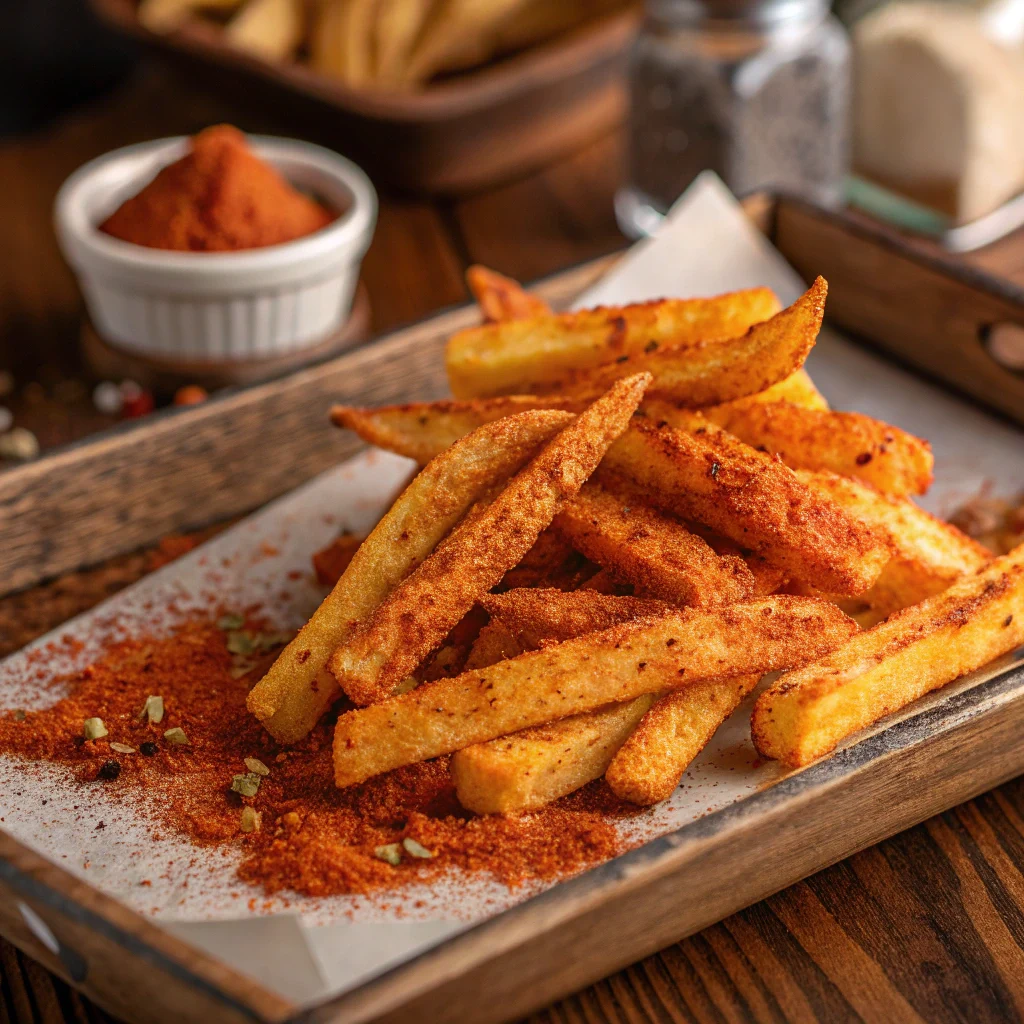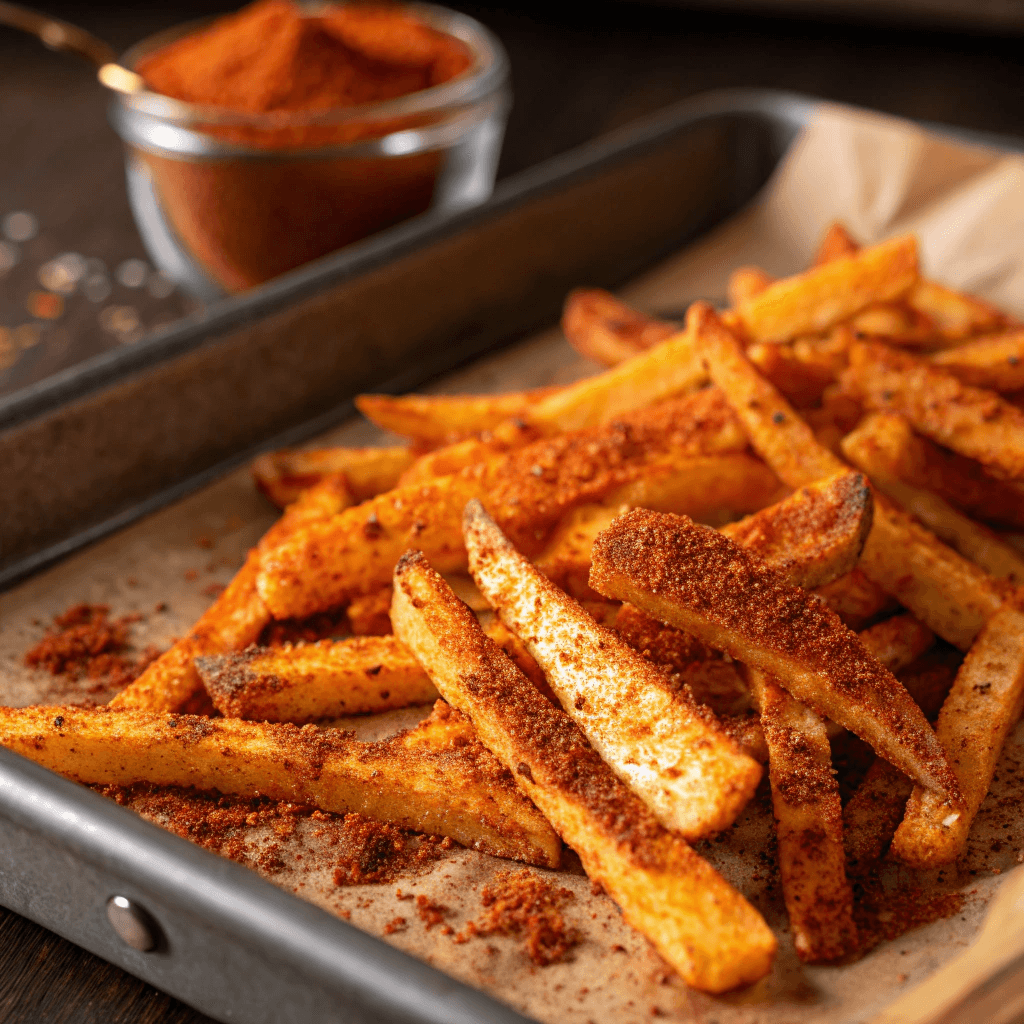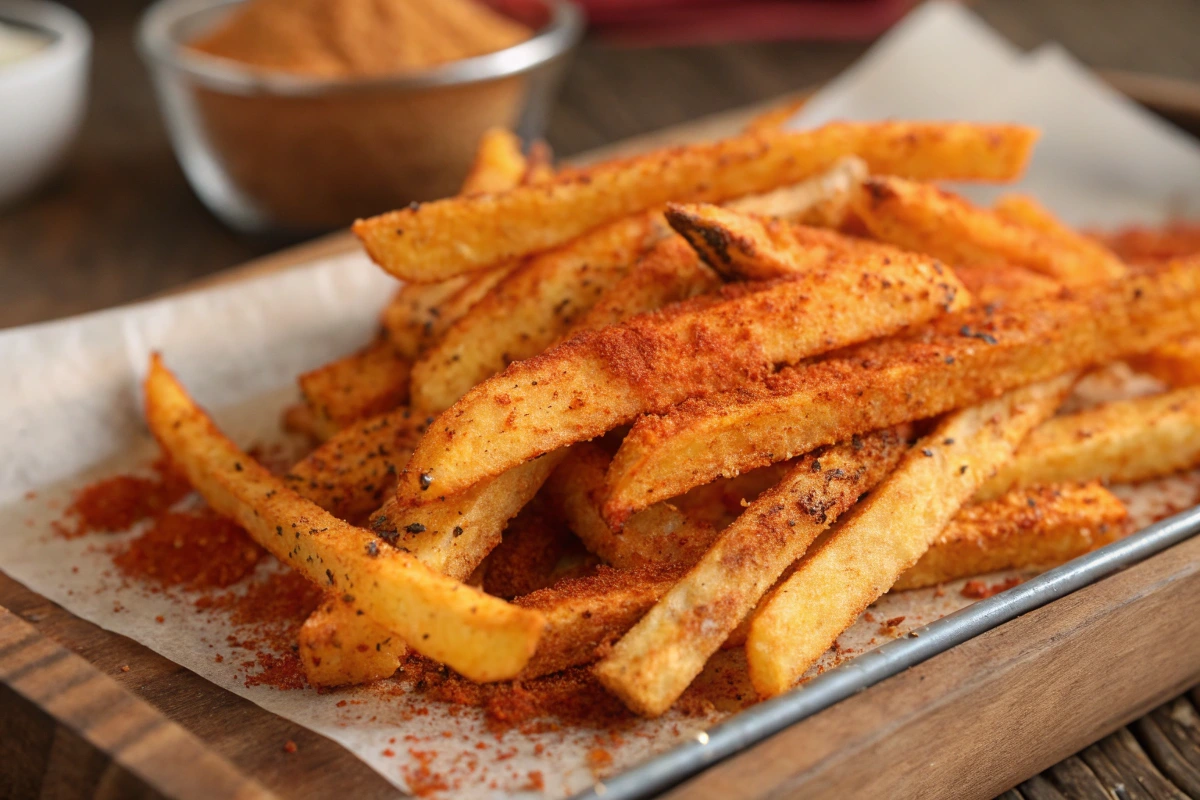Hot fries have become a beloved snack for food enthusiasts around the world. From their irresistible crunch to their fiery spice, these snacks have carved a special place in culinary hearts. But there’s more to hot fries than just their addictive taste. This article dives deep into the science, culture, and impact of hot fries on our food. We’ll explore their ingredients, flavor profile, health implications, and even their cultural significance. So, buckle up and let’s uncover what hot fries do for our food.
Table of contents
Introduction to Hot Fries
The Popularity of Hot Fries
Hot fries are no ordinary snack—they’re a sensation. Whether it’s a casual movie night or a quick bite between meals, hot fries often steal the show. Their tangy heat and satisfying crunch cater to snack lovers who crave bold flavors. But why have they captured such widespread attention? The answer lies in their unique blend of spice and texture, which creates an unforgettable eating experience.
Why Hot Fries Are a Global Sensation
What makes hot fries a global favorite? It’s not just their taste—it’s the versatility they offer. Paired with dips, added to dishes, or enjoyed straight from the bag, hot fries are as flexible as they are flavorful. From street food markets to fine dining twists, they’ve found a place in cuisines across continents. Moreover, their addictive quality, driven by the perfect balance of spice and salt, keeps people coming back for more.
The Ingredients of Hot Fries
Core Components: What Makes Them ‘Hot’
Hot fries aren’t just ordinary fries with a sprinkle of spice. Their heat comes from a careful combination of bold ingredients, including paprika, cayenne pepper, and other fiery seasonings. These components work together to deliver the signature kick that defines hot fries. But it’s not just the heat—other elements like salt, garlic powder, and even a touch of sugar balance the flavor profile, creating a crave-worthy snack. This mix isn’t just random; it’s carefully crafted to stimulate taste receptors in your mouth, giving you that satisfying blend of heat and flavor.
If you’ve ever wondered, what does hot fries do for our food, the answer lies in these spicy ingredients. They awaken our taste buds, making food feel more exciting. And let’s not forget the iconic orange-red coating—it’s not just for looks. This vibrant color is a result of annatto or paprika extracts, which enhance the visual appeal and create anticipation before that first crunchy bite.
The Science of Spices in Hot Fries
The magic of hot fries doesn’t just stop at the tongue—it’s backed by science. Capsaicin, the active compound in chili peppers, is a key ingredient in the spice blend. It interacts with pain receptors in the mouth, triggering a tingling sensation. Interestingly, this sensation also causes the brain to release endorphins, which can create a mild feel-good high.
Furthermore, the crispy texture plays a role in how we perceive the taste. Studies show that crunchiness enhances the satisfaction of eating, making hot fries even more irresistible. By combining spices and texture, these snacks elevate not just the food they accompany but also the overall eating experience.
The Impact of Hot Fries on Taste and Food Enjoyment
How Hot Fries Elevate Flavor Profiles
When added to a meal, hot fries do more than just provide a side dish—they transform the entire plate. Their spice amplifies the flavors of other ingredients, making food taste richer and more vibrant. For example, pairing hot fries with a juicy burger or creamy dip creates a contrast that heightens the umami experience. It’s no wonder that chefs and food enthusiasts alike use them as a flavor booster in creative recipes.
Hot fries also add a smoky depth to dishes, thanks to the paprika and cayenne. This quality makes them a popular choice for topping casseroles, salads, or even mac and cheese. In many ways, they serve as both a seasoning and a side, proving that what does hot fries do for our food is truly versatile.
The Role of Texture in Food Satisfaction
Beyond flavor, texture plays a huge role in how we enjoy food, and hot fries deliver this in spades. Their crispiness contrasts beautifully with softer foods, like mashed potatoes or creamy soups. This textural variety keeps our taste buds engaged, preventing monotony and making each bite a new adventure.
Moreover, that distinct crunch isn’t just pleasing to the palate—it’s psychologically rewarding. Research shows that crunchy foods create a multisensory experience, combining sound, taste, and feel to enhance satisfaction. Whether eaten alone or as part of a dish, hot fries create a symphony of sensations that elevate the dining experience.

What nutrients are in hot fries?
Caloric and Nutritional Overview
Hot fries may be packed with flavor, but they also come with a nutritional price. A typical serving contains a mix of carbohydrates, fats, and proteins, along with a notable amount of sodium. These snacks are often calorie-dense due to their fried nature and oil content. For example, a small bag of hot fries can pack over 300 calories, making it a treat best enjoyed in moderation.
What makes them slightly more acceptable as a snack is the use of spices like paprika and cayenne, which may offer minor health benefits like boosting metabolism. However, their high salt content can be concerning, especially for those watching their sodium intake. This raises the question, what does hot fries do for our food when it comes to nutritional value? While they’re not the healthiest option, their bold flavor can satisfy cravings when paired with balanced meals.
Nutritional Breakdown of Hot Fries (Per 1 Serving, ~28g)
| Nutrient | Amount Per Serving |
|---|---|
| Calories | 150 |
| Total Fat | 9g |
| Sodium | 260mg |
| Total Carbohydrates | 15g |
| Dietary Fiber | 1g |
| Sugars | 0.5g |
| Protein | 1g |
| Iron | 0.6mg |
| Potassium | 150mg |
If you’re looking for healthier options, check out this guide to making cottage cheese chips for a lighter yet crunchy alternative.
Are Hot Fries Healthy? Pros and Cons
Hot fries walk a fine line between indulgence and concern. On one hand, their addictive taste makes them a go-to snack. On the other, their high fat and salt levels might outweigh any benefits. The addition of spices, however, provides a slight edge, as capsaicin (from chili peppers) is known to support weight management by reducing appetite and increasing calorie burn.
Nevertheless, they should be consumed sparingly. Balancing them with nutrient-dense foods like vegetables or protein can help mitigate the impact of their high calorie and salt content. If you want a healthier spin, consider baking your own fries at home with less oil and salt.
Cultural Significance of Hot Fries
Hot Fries in Different Cuisines
Hot fries have transcended borders, becoming a global sensation. In many cultures, these snacks are tailored to fit local tastes. For example, in South Asia, you might find hot fries infused with tangy tamarind or extra chili for added heat. Meanwhile, in the United States, they’re often paired with classic condiments like ranch or ketchup, making them a favorite at casual gatherings and parties.
The appeal of hot fries lies in their versatility. They can be enjoyed as a standalone snack, a side dish, or even incorporated into recipes. Their ability to blend seamlessly into various cuisines showcases their universal charm. It’s no wonder that what does hot fries do for our food extends beyond taste—they’ve become a cultural icon.
The Snack That Defines a Generation
Hot fries aren’t just a snack; they’re a symbol of modern snacking culture. From their vibrant packaging to their bold taste, they appeal especially to younger generations who crave adventurous flavors. Social media has further fueled their popularity, with countless users sharing creative ways to enjoy them—from topping nachos to adding them as a crispy layer in burgers.
Their cultural impact isn’t just limited to taste; it’s about the shared experience of enjoying something spicy, crunchy, and fun. Hot fries have become a snack that brings people together, bridging gaps between traditional and modern food trends.
Psychological Effects of Spicy Snacks
Why We Crave Spicy Food
Have you ever wondered why you keep reaching for another hot fry, even when your mouth feels like it’s on fire? The answer lies in the fascinating way our brains respond to spicy food. When we eat something spicy, like hot fries, capsaicin—the compound that gives chili peppers their heat—triggers pain receptors in our mouth. This sensation isn’t just about discomfort; it sets off a cascade of reactions in the brain.
To counteract the “pain,” our brain releases endorphins, the feel-good chemicals that act as natural painkillers. This response creates a euphoric sensation, making spicy foods incredibly satisfying. In essence, what does hot fries do for our food is more than just adding flavor—it delivers a unique psychological reward.
Interestingly, some people are more drawn to spicy foods than others, possibly because of genetic differences or their upbringing. Regardless of the reason, the combination of heat and crunch in hot fries makes them a snack many find irresistible.
Addiction to Hot Fries: A Real Phenomenon?
While hot fries might not be “addictive” in a clinical sense, their combination of spicy flavors, salt, and satisfying crunch can trigger cravings that feel like an addiction. Foods high in salt and fat stimulate the brain’s reward center, leading to a desire for more. This is why you might find it hard to stop at just one handful.
Adding to this is the social aspect of eating hot fries. Whether shared at a party or enjoyed during a movie, these snacks often become part of memorable experiences, reinforcing positive associations. It’s easy to see how hot fries elevate the food experience, making them more than just a snack—they’re a sensory and emotional indulgence.
FAQs Section
Are hot fries good for you?
Like most processed snacks, hot fries aren’t the healthiest option, but they’re not inherently bad when eaten in moderation. Their high sodium and calorie content make them a treat best enjoyed occasionally rather than daily. Pairing them with healthier options, like fresh vegetables or lean protein, can help balance their impact.
Do Hot Fries Add Any Nutritional Value to Meals?
While hot fries don’t offer significant nutritional value, they can enhance the enjoyment of a meal. Their bold flavor and crunchy texture complement softer or milder dishes, making the overall experience more satisfying. Think of them as a flavor enhancer rather than a primary source of nutrients.
Why Are Hot Fries So Addictive?
The addictive appeal of hot fries lies in their combination of spice, salt, and crunch. This trifecta triggers pleasure centers in the brain, making you want more. The psychological response to the heat, along with the satisfying crunch, creates a sensory experience that’s hard to resist.
Are fire fries and hot fries the same thing?
Fire fries and hot fries are similar but not exactly the same. While both are spicy snacks, fire fries typically have a more intense heat level and are marketed as extra spicy. On the other hand, hot fries tend to focus on a balance of heat and flavor, making them milder in comparison. Additionally, the seasoning blends may differ, as fire fries often include a smokier or tangier spice profile. Ultimately, both snacks appeal to spice lovers, but fire fries cater to those who crave a bolder, hotter kick.
Recipes and Creative Uses of Hot Fries
Hot Fries in Gourmet Cooking
Hot fries may be a popular snack, but their potential goes far beyond eating them straight from the bag. These crispy, spicy treats can add a burst of flavor and texture to a variety of gourmet dishes. For instance, you can crush them into crumbs and use them as a coating for chicken tenders or fish fillets. The result? A crunchy, flavorful crust that elevates even the simplest meal.
Another creative way to use hot fries is by incorporating them into salads. Sprinkle crushed hot fries over a Caesar salad or taco bowl to add a fiery kick and an irresistible crunch. The combination of fresh greens and the bold spice of hot fries creates a balance that’s both satisfying and unexpected. Truly, what does hot fries do for our food is nothing short of transformative when used creatively.
DIY Hot Fries Recipes
If you’re feeling adventurous, why not try making your own version of hot fries at home? Homemade hot fries allow you to control the level of heat, salt, and oil, making them a healthier alternative. Start with thinly sliced potatoes or sweet potatoes, then toss them in a spice blend featuring paprika, cayenne, garlic powder, and a touch of smoked salt.
For added crunch, bake the fries at a high temperature or air-fry them for a guilt-free snack. Want to take it up a notch? Experiment with different spice combinations or add a drizzle of honey for a sweet-and-spicy twist. Homemade hot fries can be tailored to your taste, proving that their versatility goes far beyond the store-bought variety.


